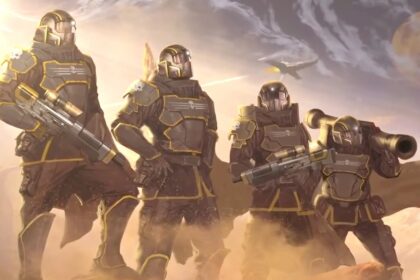Your Friendly Neighborhood Spider-Man: A swing and a hit.
Finally, the first season of Your Friendly Neighborhood Spider-Man, the newest show from Marvel Animation, is over. It’s clear that this show was made with fans in mind. This project is a breath of fresh air after years without a real animated Spider-Man show.
Marvel Studios saw it as a whole new storyline, a long-form “What If…” that explored exciting new prospects for Peter Parker’s life and relationships. Almost every frame demonstrates the company’s commitment to telling stories and developing characters. The show goes deep into Spider-Man’s history and takes creative risks that pay off beautifully. It’s not just another cash grab related to the MCU.
The past of Marvel Animation shows that they have had a mixed record when it comes to making accurate versions of Spider-Man movies. Earlier attempts often relied too heavily on merchandise or adhered too closely to safe MCU tropes, which could have hindered character depth. That being said, Marvel has found the right balance with this series.
They like what Peter Parker is at his core and ask big questions like, “What if Norman Osborne was Peter’s mentor instead of Tony Stark?” What if Doc Ock liked to play video games? These creative changes could have failed horribly, but when done by this team, they make a compelling alternate Spider-Man world.
This show stands out because it’s not afraid to mix old-fashioned ideas with new ones. From Ditko-inspired art to nods to the 1960s animated series, the show clearly pays tribute to Spider-Man’s past while also exploring modern character relationships, teen drama, and moral complexity. Fans who were worried about how the story might deviate from the usual Spider-Man origin will be pleased.

At its heart, Your Friendly Neighborhood Spider-Man is about Peter Parker dealing with the difficulties of being a hero, making friends, and being decent in a world that is always testing him. The story spans multiple areas, including Peter’s tenure as a mentor under Norman Osborne, Lonnie Lincoln’s rise to power as an unwilling gang leader, and Peter’s interactions with supporting characters such as Harry, Nico, and Pearl. Even though not every subplot is perfect, the show does a great job of combining them into a season-long arc that is both logical and engaging.
The emotional and story-driven core of the show is Peter’s fights, especially those with Scorpion. These scenes don’t just showcase exciting action; they also reveal how Peter evolves as a hero and the moral choices he must make. One of the most interesting aspects of the show is how it allows Peter to confront his darker urges without compromising his goodness.
Norman’s guidance prompts Peter to consider what it means to have unlimited power, which in turn fosters conflict that ultimately enhances both characters. Lonnie Lincoln, on the other hand, is a realistic figure who is torn between his morals, his family, and his gang obligations. His story is connected to Peter’s in important ways, creating tension and moments of redemption that keep the story interesting.
The teen drama elements, such as Peter’s crush on Pearl, Nico’s secret powers, and Harry’s social rise despite being alone, are handled in a surprisingly gentle manner. Some viewers might find this less interesting than the heroic fights, but it makes the show more realistic and relatable by tying Peter’s extraordinary life to normal human feelings. The show doesn’t shy away from portraying Peter as flawed, sarcastic, and sometimes stressed, which is crucial for keeping the character relatable.
In a modern take on Spider-Man noir, Peter doesn’t give up being Spider-Man, but he does give up being OC Corp Spider-Man. This is one of the most impressive aspects of the show.
The Your Friendly Neighborhood Spider-Man’s strength lies not only in its story, but also in how well the characters evolve and change over time. Norman Osborne, voiced by Coleman Domingo, turns out to be a complex character who is both a guide and a morally ambiguous antagonist.

His charm, haughtiness, and self-reflection give him a depth that is rarely seen in animated villains. The show is mostly about Peter’s connection with Norman. It shows respect, ambition, and the dangers of power. Much of the season’s emotional impact stems from the tension between the two, offering a fresh perspective on Spider-Man’s history.
Care is taken with other characters, such as Doc Ock and Harry, but the results aren’t always positive. Doc Ock remains the typical cocky science genius, and his story arc is interestingly intertwined with Peter’s and Norman’s. At first, Harry’s updated design choices don’t impress, but he eventually finds his place in the story as a rich, socially awkward teen who is becoming more independent.
Lonnie Lincoln is one of the characters who is consistently well-played; the show subverts the “bully quarterback” stereotype by portraying him as a caring but morally uncertain person. His growth throughout the season, including the moral choices he made during the final gang fight, demonstrates how effectively the show combines superhero action with human drama.
These complicated partnerships are good for Peter. Some modern versions of Peter put too much emphasis on jokes and “adorable humor,” but this Peter is smart, caring, and able to handle real danger. His fights with Scorpion, in particular, demonstrate his vulnerability and determination, showcasing his struggle to fight both physically and morally. The show also reveals Peter’s inner conflict regarding his mentor, his powers, and his sense of duty, which leads to moments of profound emotional growth.
Seeing Peter lose his charm and let out his inner rage is always exciting. But it’s even better when we see him struggle with these reasons, unable to understand why he went to such a dark place.
Your Friendly Neighborhood Spider-Man looks great because it’s a great mix of 3D animation and comic book-style graphics. The art direction is both retro and modern, capturing the original Spider-Man style of the 1960s while allowing the web-swinging and action scenes to flow naturally. Different camera views, kinetic editing, and split panels give the show a comic book feel that doesn’t feel forced or cheap.

The fight routine in the show is excellent. From Peter’s quick fights with Scorpion to his clash with Daredevil, the action is fresh, intense, and visually stunning. Sound design makes the experience even better, especially during high-stakes scenes where you can feel every hit, swing, and blast. The general look and energy of the show are consistently high, which keeps viewers engaged, even when the animation occasionally becomes stiff.
Your Friendly Neighborhood Spider-Man also does a great job with the costumes. Peter’s standard suit, Oscorp suit, and other versions are all carefully crafted to strike a balance between homage and originality. Minor complaints, such as the placement of the name or the colors used, don’t detract from how well it works overall. These designs show how much the show cares about its Spider-Man character and history through their attention to detail.
Every once in a while, you get some stiff movement, but I was really surprised by how flexible Spider-Man is.
Your Friendly Neighborhood Spider-Man was originally meant to fit into the MCU, but it wisely chose its own timeline, which allows it to explore characters and plots without any limits. The show makes nods to elements in the MCU, such as the Civil War and the Sokovia Accords, but it remains separate, allowing the writers to explore “what if” scenarios. Characters like Daredevil and Doctor Strange make cameos and nods that add to the excitement without taking away from Peter’s story. This creates a rich, interconnected world that remains aware of its limits.
By incorporating Marvel lore while remaining its own entity, the show can explore Peter’s past, the Symbiote, and potential future plots, such as hinting at supporting characters with superpowers. This method respects the source material while keeping the story new and surprising. Fans can enjoy seeing old characters in new situations, which makes the show enjoyable for both new and old fans.
Marvel did a great animation job with Your Friendly Neighborhood Spider-Man. It remains true to the heart of Spider-Man while offering us engaging stories, compelling character arcs, stunning graphics, and thrilling action. The show excels at balancing moral depth, teen drama, and superhero spectacle. Peter Parker is portrayed as caring, funny, and brave, and the supporting characters, especially Norman and Lonnie, add depth and complexity to the story.

While Your Friendly Neighborhood Spider-Man isn’t perfect—certain characters, like Pearl or Harry, may feel underdeveloped, and there are times when the animation is noticeably stiff—it more than makes up for it with energy, creativity, and fun. The story becomes increasingly interesting and rewarding as it unfolds, from Peter’s fights and moral tests to Norman’s guidance and the main plot. Action scenes, sound design, and costume design all work together to make a movie that is both physically and emotionally rich.
Ultimately, this show revealed why Spider-Man remains one of the most beloved superheroes of all time. This new, creative, and heartfelt version of the story shows that cartoon Spider-Man stories can be brave, smart, and touching. Your Friendly Neighborhood Spider-Man is not only fun to watch, but it also shows what Peter Parker is really like, which makes it a must-see for any Spider-Man fan. The character may have been raised to a new level by Marvel Animation. I can’t wait to see where they take him next.














